Section I
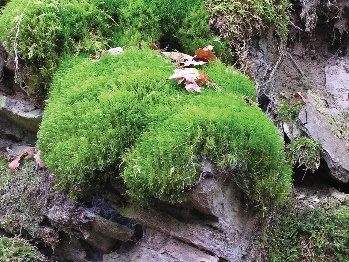
Bryophyta (mosses)
- Bryophyta
- Broom Moss
Bryophyta (mosses) are minute non-vascular non-flowering plants that form condensed green mats or clusters in shady and damp sites, and their leaves are usually unicellular and affixed to the stem.
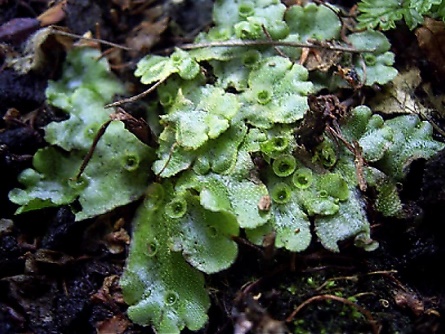
Hepaticophyta (liverworts)
- Hepaticophyta
- Marchantia
Hepaticophyta (liverworts) are land plants that are dominated by gametophytes with a unitary pair of genetic material and often grow as flattened thallus with leaves.

Anthocerotophyta (hornworts)
- Anthocerotophyta
- Soft Hornwort
Anthocerotophyta (hornworts) are small non-vascular plants that grow in damp soils, anchored by rhizoids on their lower surface, and propagate via either the flattened lobular gametophytes or tapered sporophytes.
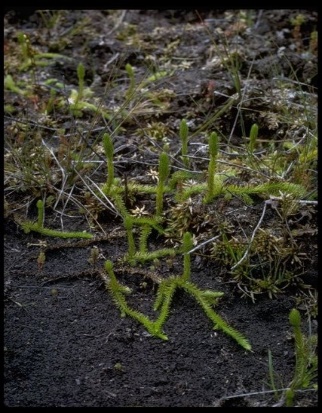
Lycophyta (club mosses)
- Lycophyta
- Northern Bog Clubmoss
Lycophyta (club mosses) are seedless and flowerless terrestrial plants whose metaxylem houses the protoxylem. They also have flap-like stems, and their leaves have single veins.
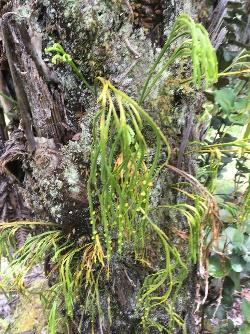
Psilotophyta (whisk ferns)
- Psilotophyta
- Flat Fork Fern
Psilotophyta (whisk ferns) are lower vascular plants with food and water transporting tissues but lack true roots and leaves. Water and mineral diffusion transpire in rhizomes (root-like structures), and photosynthesis ensues in aerial stems.
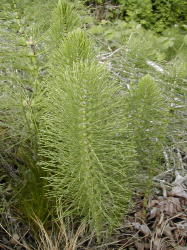
Sphenophyta (horsetails)
- Sphenophyta
- Field Horsetail
Sphenophyta (horsetails) are plants with a ring of analogous vascular bundles that hold the aerial shoot upright. Their leaves appear in whorls and sheathed at every node.
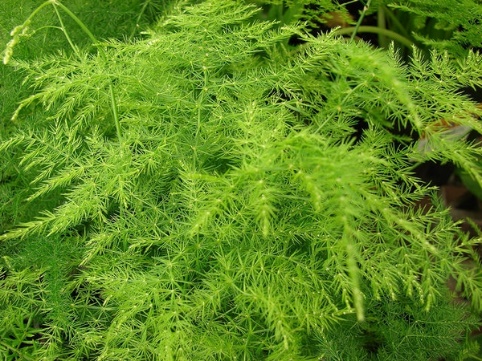
Pterophyta (ferns)
- Pterophyta
- Asparagus Fern
Pterophyta (ferns) grow on damp rockfaces and have adventitious roots (rhizomes), where the leaves develop in the form of fiddleheads.
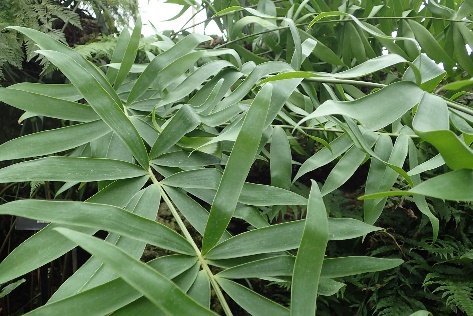
Cycadophyta (cycads)
- Cycadophyta
- Bamboo Cycad
Cycadophyta (cycads) are gymnosperms with large crowns of pinnated compound leaves and cones attached at the branch peripherals. Pollen is produced by male cones and transferred to female cones by the wind.
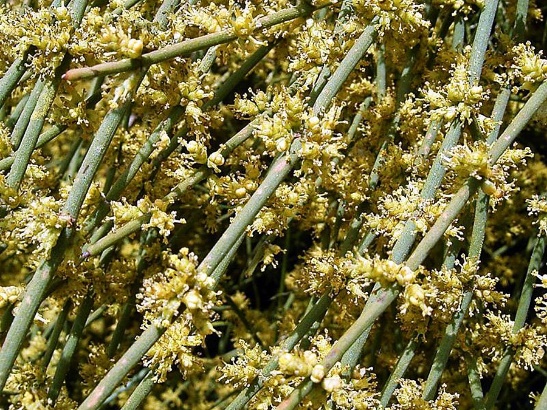
Gnetophyta (gnetophytes)
- Gnetophyta
- Joint Pine
Gnetophyta (gnetophytes) are vascular flowering plants cascaded from the larger group of gymnosperms phyla. They also have vessels for conducting water in the secondary xylem. Gnetophytes undergo double fertilization, where a pair of sperm nuclei unites with the female gametophyte nucleus. The gamete-generating cells in gnetophytes are protected by the archegonia structures. Gnetophyta mainly comprises the woody vines or shrubs, and their leaves exist oppositely in threefold whorls.
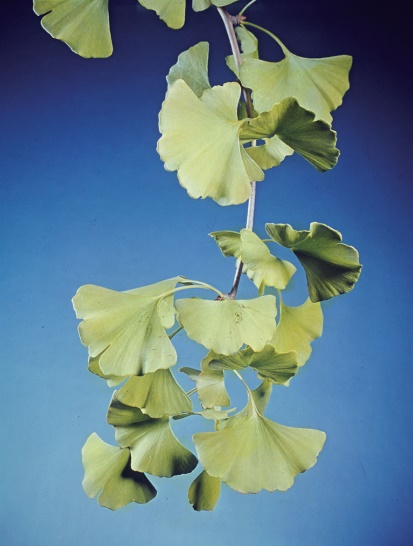
Ginkgophyta (Ginkgo)
- Ginkgophyta
- Maidenhair Tree
Ginkgophyta (Ginkgo) is flat and erratically notched with fan-shaped leaves which are heavily grooved at the center, forming two unique lobes. The leaves have an open dichotomous pattern where the veins diverge in pairs from the leaf’s base without cross-connection. Their cuticles have recessed pores with few stomata on the adaxial surface, which aid in minimizing water loss via evaporation.
Section II
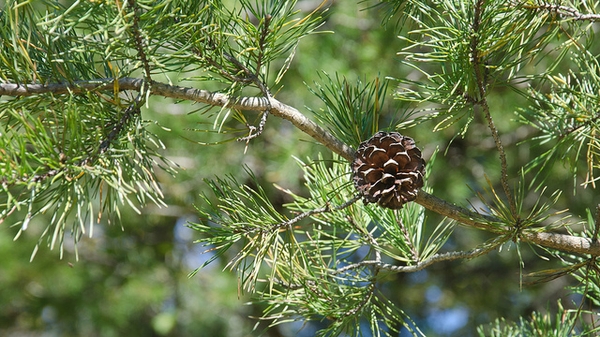
- Virginia Pine, Spruce Pine, or Scrub Pine
- The trees grow to moderate heights ranging from 15 to 40 feet. They have short and twisted needles that exist in pairs (“Pinus virginiana,” n.d.). They also have small yellow or red-brown cones which are firmly attached to tree branches.
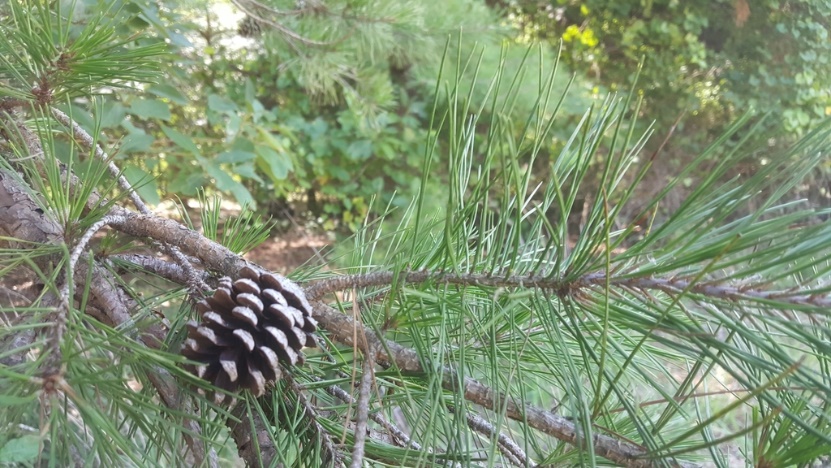
- Rosemary Pine, Old-Field Pine, Shortleaf Pine, Short-Leaf Pine, Yellow Pine
- The tree may grow to heights of between 80 to 100 feet. It has slender and flexible needles of 3 to 5 inches in length that appear in groups of twos or threes (“Pinus echinata,” n.d.). The tree also bears pale-pink female cones and pale-purple male cones.
Virginia pine grows best in dry clay soils and sandy acidic loam and is susceptible to disease and pest infestation. Conversely, Rosemary pine does well in a wide range of well-drained soils and tolerates sunlight shades.
Section II and III
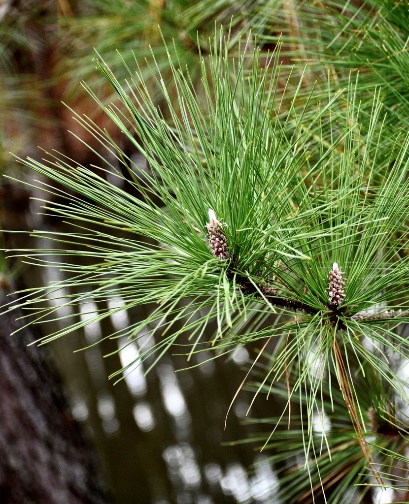
- Southern Pine, Long-leaf Pine, or Longleaf Pine
- When fully grown, the height of the tree may range between 60 to 120 feet. The tree has slim and feathery needles with lengths of between 8 and 18 inches that occur in constellations of threes (“Pinus palustris,” n.d.). The tree also bears dark-purple female cones and purple-blue male cones.
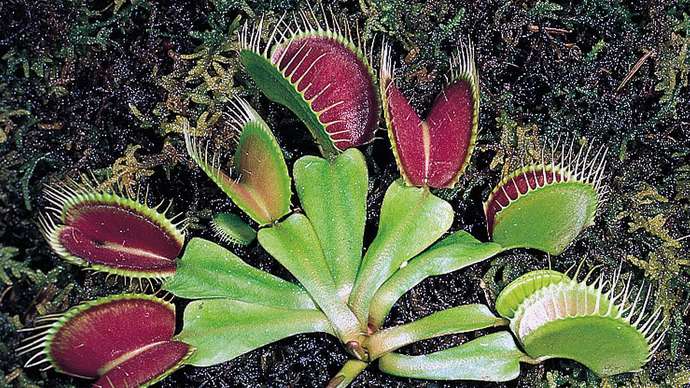
- Venus flytrap
- Mechanism of pollination: insect pollinated
Southern pine does well in well-drained clay or sandy soils in the presence of full sunlight. The seeds of Longleaf pine require exposure to fire to stimulate germination. However, the tree exhibits vulnerability to lightning, drought, strong winds, storm, and ice damage. Venus flytrap is a carnivorous plant that engulfs and digests insects and other small organisms. Additionally, the Venus flytrap utilizes nitrogen-rich proteins from animals to generate the requisite energy for survival in adverse soil conditions.
Section III
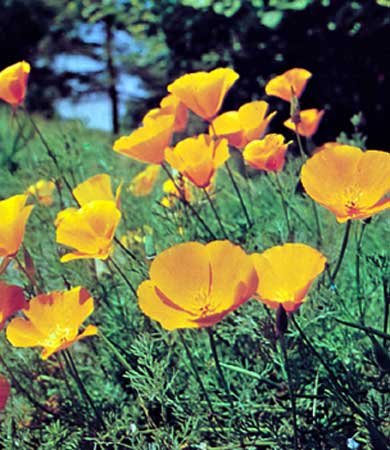
- California poppy
- Mechanism of pollination: insect pollinated
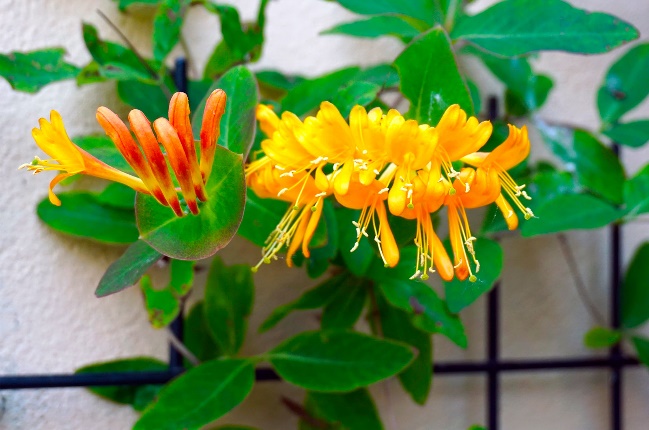
- Honeysuckle
- Mechanism of pollination: insect pollinated
California poppy is a perennial plant with foliage that is gray-green and feathery. The plant bears four-petaled flowers that are either orange, pale yellow, or cream on its stem. However, domesticated varieties exist in whites with numerous pink and red shelters. The cursory flowers rapture only in the presence of sunlight and produce slender capsulated fruits.
Further, their round brown or black seeds have the ability to remain in soil seed ramps until the permeation of favorable growing conditions. Honeysuckle is a deciduous plant with oppositely organized simple leaves on its stems. They have bi-lipped scented flowers with saccharine nectar and distinctive leaf buds. The canular flowers are procreated in pairs, and the yielded fruits are either black, orange, or red berries.
References
Pinus echinata. Plants.ces.ncsu.edu. (n.d). Web.
Pinus palustris. Plants.ces.ncsu.edu. (n.d). Web.
Pinus virginiana. Plants.ces.ncsu.edu. (n.d). Web.